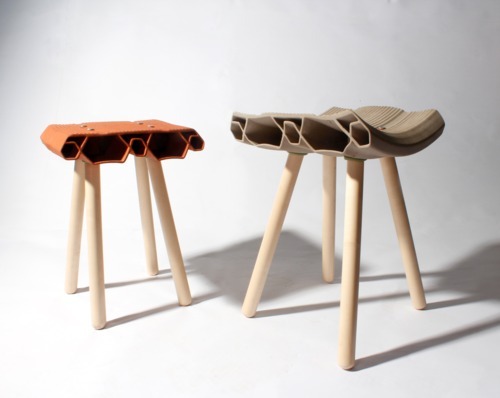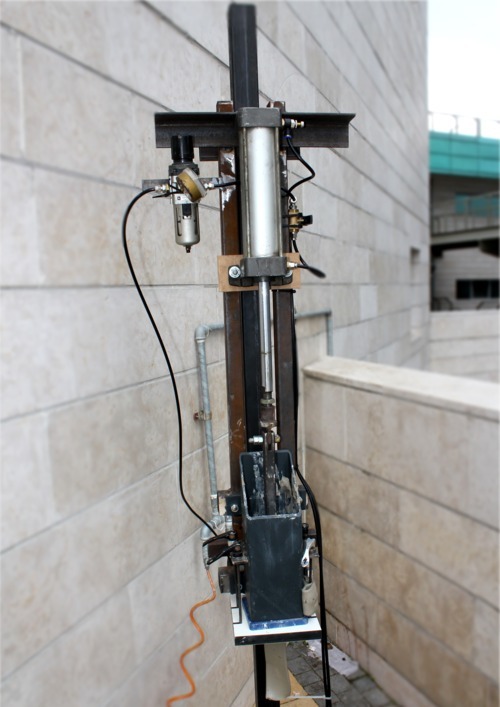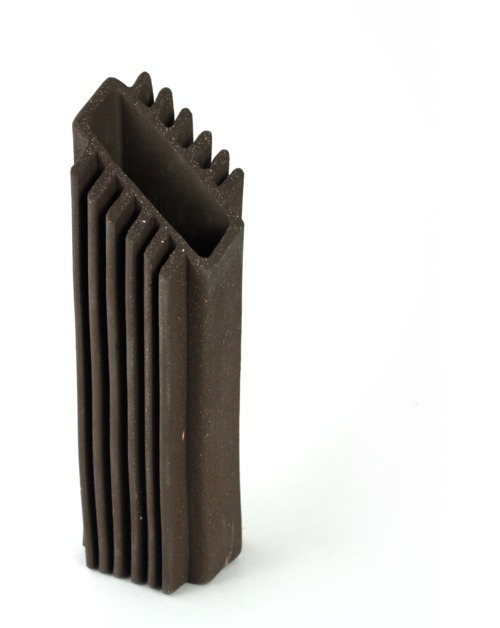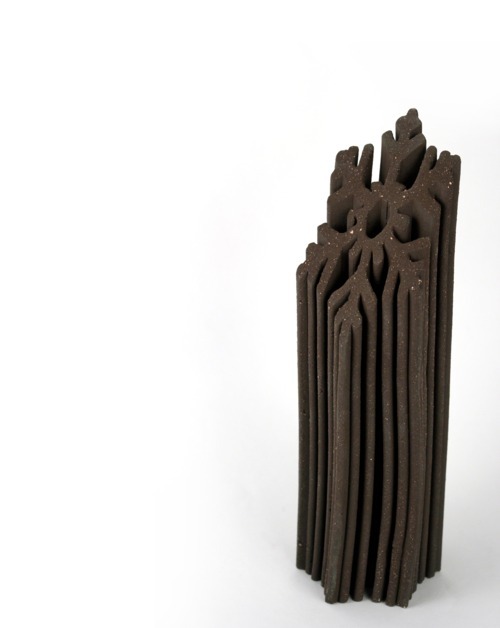Interview with Max Cheprack

You are studying Industrial Design at the Holon Institute of Technology, Israel, and recently you underwent a research project on clay extrusion. What are its concepts? Tell us about the technical process.
The extruding clay project started in the third year of my studies, for B.design in industrial design, when I first met the manual extruder in ceramics course. After learning various techniques in the field of ceramic design, I was fascinated by the option to create clay objects using replication. The Semi-industrial process of extruding clay enables the creation of precise and complex objects easily and quickly. Extrusion allows me to design the inside of the object, something that the rest of the techniques do not allow. Extruding technology allows to produce a closed and complex object, and therefore very strong. This allows the expansion of production beyond the products we know today. In addition, this technology brings new aesthetic to the ceramic field.
As an Industrial designer who is interested in manufacturing technologies, I moved away from the dies that come with the manual extruder Kit, and I began to assemble a set of basic dies with complex shapes. Later, I have built an extruder that works on a pneumatic piston, in order to free both of my hands. This allows me to make a variety of manipulations on the objects like bending and cutting.
In order to explore the limits of this technology, I decided to make a stool. The stool is a challenging product for extruding clay process because it is a relatively big product, which must be strong enough to bear persons weight, and should be able to connect with other materials.
My inspiration is taken from a local element of the Middle East - Mashrabiya. Though the project ended as part of my design studies, for me he is a starting point to new possibilities in ceramic design.
What was the most difficult part in creating the necessary tools for the project? Did you get any help?
The hardest part in this project was to understand the size relation between the size of the die and the amount of power that needed to push the clay. First I played with the manual extruder that we have in our workshop, and then I made different dies to check how complex things can be. After realizing clearly how things are working, I wanted to make the next step towards an extruder that will free both my hands to make manipulations on the objects while it is being extruded. I consulted with an engineer who just gave me a headache with schemes numbers and stuff that I couldn’t understand, so I decided to use a pneumatic piston as my base for the machine and after many trails with different pistons and die sizes I made one small extruder and one big extruder.
Do you see the potential of the clay extruding technique you created? How did the people react to your project; the professors, friends?
I think that most of the potential in the technique of extruding clay is not in the big industries field but as another medium for the ceramic artist. All the manipulation on the object are done by hand, the strongest part in this project is in the shapes that look like they created by a machine but the general shape (bending and cutting) are done by hand at the moment of the extruding, so this is a great combination of man and machine - the artist putting his emotions into an object that came out of a machine.

Max Cheprack, Extruding machine
Apart from this research project you are also passionate about cycling, or more precisely - about building and reconditioning bikes. When did you discover this interest?
My passion about machines began at a younger age. When I was fourteen, I got my first true mountain bike, been in a cycling competition a month later, finished with leg crumbs and full of adrenaline. From that point, I felt in love with cycling. As a kid, I rode every spare moment, worked in a bicycle shop as a mechanic on weekends and holidays and got my abilities there. Later I thought riding skills and mechanical skills at a mountain bike school. I always had a passion for the old bicycle. They are simple, very functional and usually hand crafted and that is what makes them into unique objects.
How does reconstructing bicycles helps the local community and the youth? Recently, teaching bike building skills became part of the curriculum at a local school in Haifa, the Hewar Democratic School.
A year ago we (Yossi Levin and I) established Nisnas cycles. Nisnas cycle is a small workshop dedicated to bicycle commuters. We build custom lugged steel frames, leather bags, and wooden fenders. Every Thursday we teach the children at the Hewar Democratic school in Haifa pragmatic tools for building bikes and throughout the process we teach neighborhood history which is really important given the messy history of the occupation, immigration and general mayhem here. Every kid gets a set of tubes that were cut away from an old bicycle. They learn how to build a bicycle and how to navigate through in the neighborhoods in and around Haifa. This is a living history lesson.


Max Cheprack, Extruded clay forms, 2011
You are currently traveling through India. Which one of your passions got you there?
My passion for traveling, seeing new places, meeting new people, exploring different cultures, and the feeling of complete freedom got me to India. This is my second time in India; I was here five years ago for five months, and I have chosen to go back to India again so I can explore this country from a mature perspective. India is an extreme country in the sense of the diversity of experience - amazing nature, colorful culture, spirituality, interesting people and many more.
Being a very creative person means that you will always work on something more. Share with us your plans.
My sketchbook is getting full with some new ideas from wire jewelry to laminated furniture. I am enthusiastic to go back to my extrusion research and to expand the research. During my time in India, I am trying to collect inspiration for future projects, so I am taking many pictures, and I sketch a lot.
By Vasi Hîrdo
Published in Ceramics Now Magazine Issue 2
